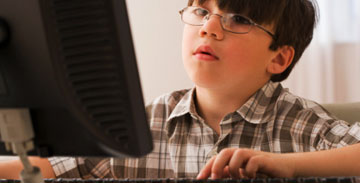The American Academy of Pediatrics, the American Academy of Ophthalmology, and the Council on Children with Disabilities published a statement summarizing what is currently known about visual problems and dyslexia. The statement also covers what treatments are and are not recommended when diagnosing and treating vision problems, learning disabilities, and dyslexia.
Thanks to advances in imaging techniques and scientific inquiry, we now know much more about learning disabilities (LD), dyslexia, and the role of vision problems. The American Academy of Pediatrics, the Council on Children with Disabilities, and the American Academy of Ophthalmology published a joint statement that summarizes what is currently known about visual problems and dyslexia. The statement also covers what treatments are and are not recommended when diagnosing and treating vision problems, learning disabilities, and dyslexia.
The eyes play an important role in sending visual signals to the brain, and a lot of information presented at school is presented visually. For these reasons, it’s important to make sure your child is able to see well and correctly. Schools often do vision screenings at the beginning of the year, and your pediatrician’s office can refer you to an ophthalmologist with experience in caring for children. However, vision problems are not the cause of dyslexia or learning disabilities. The federal definition of learning disabilities is careful to state that the learning disabilities do not include learning problems that are primarily due to visual difficulties.
Because vision problems do not cause dyslexia or learning disabilities, treating LD or dyslexia through approaches such as eye exercises, behavioral vision therapy, or special tinted filters or lenses won’t help. Therapies and treatments like those described are not supported by scientific evidence, and are not recommended or endorsed.
There are several recommendations that do support the needs of children:
- Children who show signs of learning disabilities should be referred as early as possible for further testing.
- The diagnosis and treatment of learning disabilities depends on the collaboration of a team that may include teachers, audiologists, speech therapists, physicians, and others.
- Children with identified learning disabilities should receive appropriate support and individualized evidence-based educational interventions combined with psychological and medical treatments as needed.
